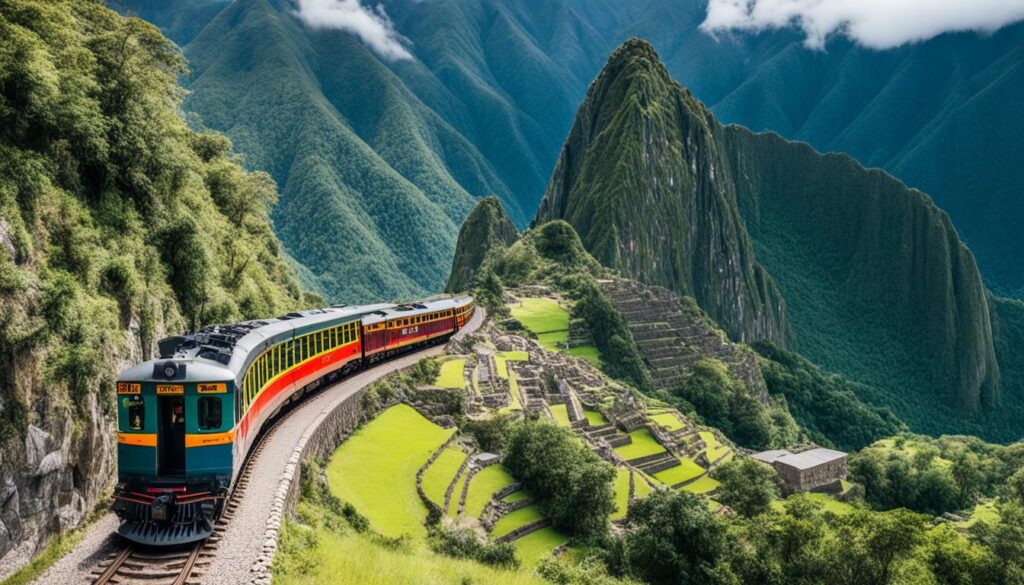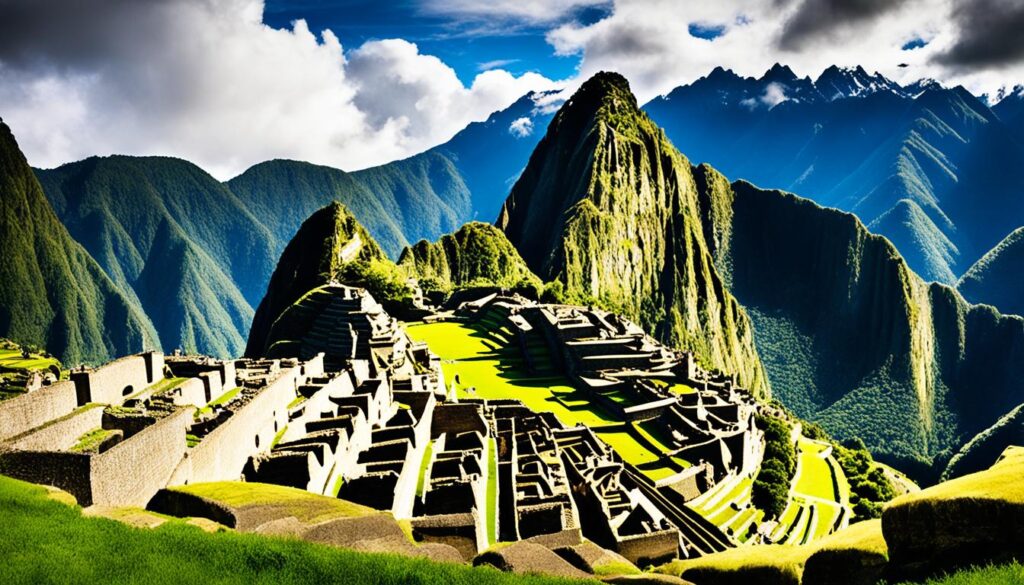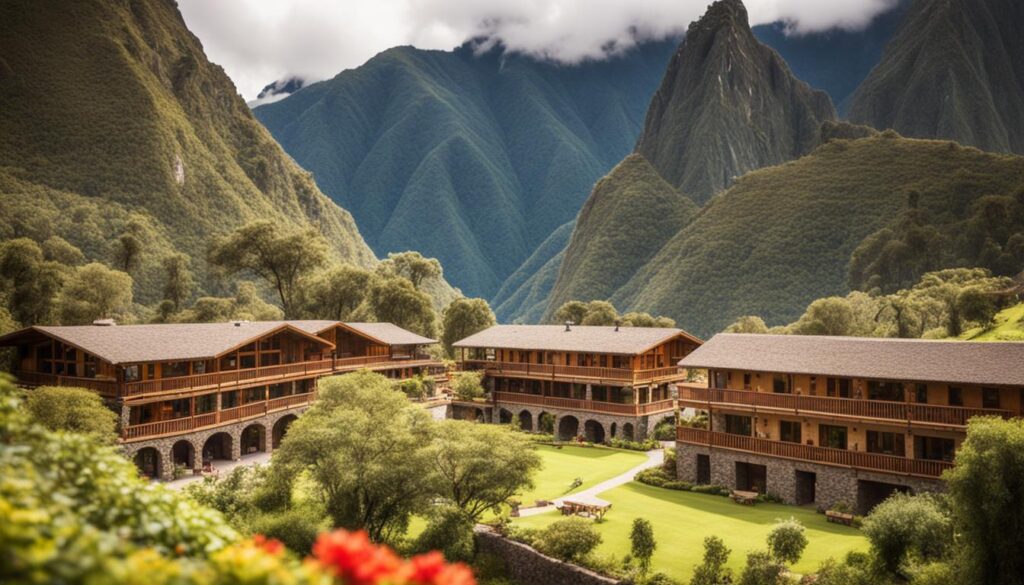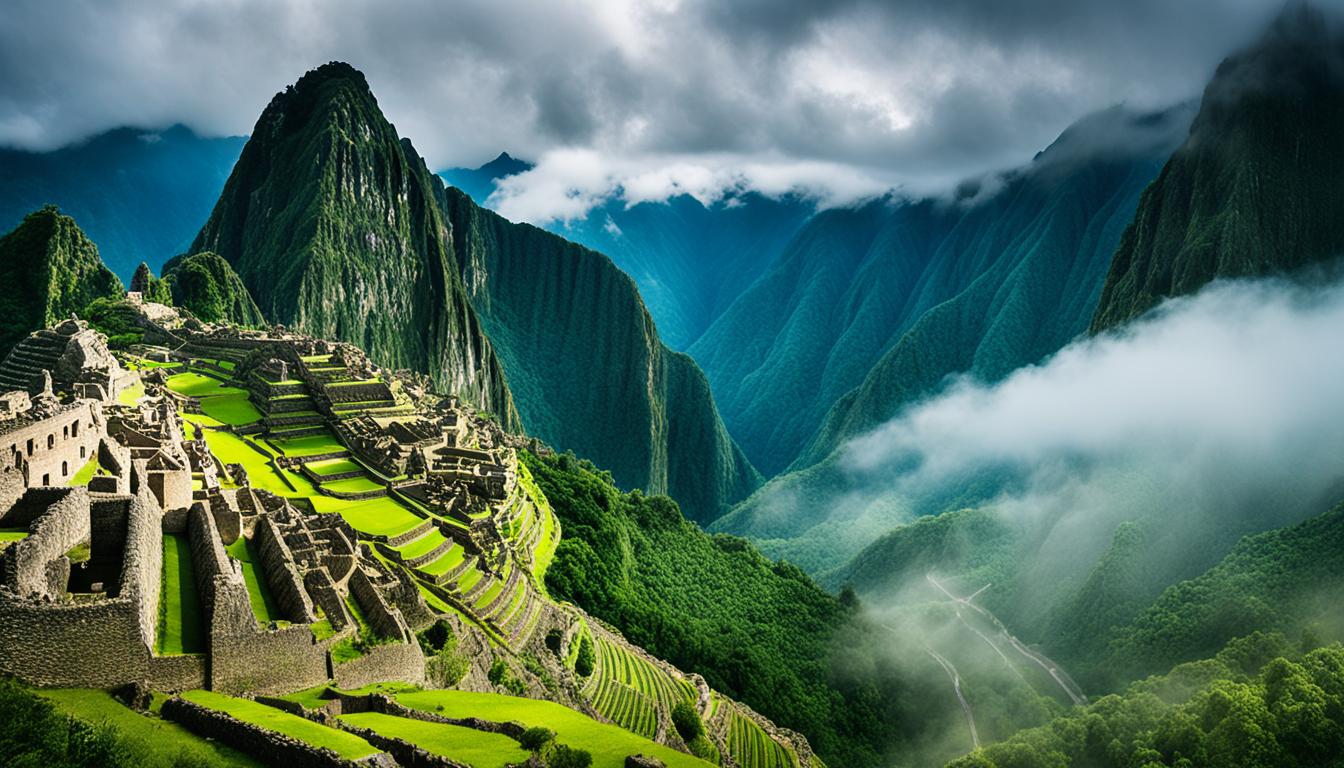Machu Picchu Travel Guide: Tips & Tours
Are you ready to embark on a journey to one of the world’s most mysterious and captivating destinations? Machu Picchu, with its ancient ruins nestled high in the Andes Mountains, has long captured the imagination of adventurers and history buffs alike. But how much do you really know about this breathtaking site?
In this comprehensive Machu Picchu travel guide, we will take you on a virtual tour, providing valuable insights into its history, climate, best time to visit, and the different ways to reach this UNESCO World Heritage site. So, let’s unravel the mysteries of Machu Picchu together and discover what makes it a must-see destination for travelers from around the globe.
Key Takeaways:
- Explore the historical background of Machu Picchu and its significance.
- Discover the ideal time to visit and the climate conditions you can expect.
- Compare the options of traveling to Machu Picchu by train or trekking.
- Uncover the must-see sights and highlights of this ancient city.
- Learn about the best accommodations and how to plan your visit effectively.
Climate, Weather, and Best Time to Visit Machu Picchu
Machu Picchu boasts a mild subtropical climate, characterized by warm days and cooler nights. Situated at the convergence of the Andes and the Amazon, the region experiences distinct seasonal variations. It would be helpful to consider the Machu Picchu climate, weather, and the best time to visit when planning your trip to this enchanting destination.
During the dry season, which spans from April to October, travelers can expect less rainfall and clear skies. This period offers optimal conditions for exploring Machu Picchu, with comfortable daily temperatures ranging from 68°F to 80°F (20°C to 27°C) and nighttime temperatures ranging from 50°F to 64°F (10°C to 18°C). The stability of the weather during this time makes it the peak season to visit, attracting a large number of tourists eager to experience the splendor of Machu Picchu.
Conversely, the rainy season occurs from November to March, bringing more unpredictable weather patterns and occasional showers. Although the Machu Picchu weather can change quickly during this time, visiting during the rainy season has its advantages. The low season, which encompasses December to February, offers fewer crowds and a more peaceful ambiance for serene exploration. However, it is essential to note that the probability of rain is higher during this period, requiring visitors to be prepared with appropriate rain gear and flexible itineraries.
Here is a summary of the climate and weather conditions in Machu Picchu:
| Season | Average Daytime Temperature | Average Nighttime Temperature |
|---|---|---|
| Dry Season (April to October) | 68°F to 80°F (20°C to 27°C) | 50°F to 64°F (10°C to 18°C) |
| Rainy Season (November to March) | Varies | Varies |
While June, July, and August are the most popular months due to the dry weather, travelers seeking a more tranquil experience may choose to visit during the low season. Regardless of the season, be prepared for sudden weather changes and ensure you have appropriate clothing and gear to fully enjoy your Machu Picchu adventure.
Getting to Machu Picchu: Train vs. Trek

When planning a trip to Machu Picchu, one of the key decisions to make is how to reach this iconic Incan citadel. There are two main options: taking a train or embarking on a trekking adventure. Both methods offer unique experiences and have their pros and cons, so it’s important to consider your preferences and abilities before making a choice.
Traveling by Train
For many travelers, the train is the preferred method of reaching Machu Picchu. It provides a convenient and comfortable journey, allowing you to relax and enjoy the stunning Andean landscapes along the way. Several train services operate from Cusco or the Sacred Valley to Aguas Calientes, the nearest town to Machu Picchu.
The train journey from Cusco to Aguas Calientes takes approximately four hours, while the journey from Ollantaytambo takes around two hours. It’s advisable to book train tickets in advance, especially during peak seasons, as they can sell out quickly.
The train option is ideal for those who prefer a more relaxed and hassle-free experience. It’s also a great choice for travelers with limited time or physical constraints, as it eliminates the need for strenuous hiking.
Trekking to Machu Picchu
For adventure enthusiasts and those seeking a more immersive experience, trekking to Machu Picchu is an incredible option. The most famous trekking route is the Inca Trail, which offers an unparalleled combination of stunning landscapes, ancient ruins, and diverse ecosystems. However, due to its popularity, permits are required, and it’s essential to plan and book well in advance.
Aside from the Inca Trail, there are other alternative trekking routes available, such as the Salkantay Trek and the Lares Trek. These routes offer different durations and levels of difficulty, catering to a variety of preferences and fitness levels.
Trekking to Machu Picchu allows you to connect with nature, challenge yourself physically, and gain a deeper appreciation for the ancient Inca civilization. It’s a rewarding experience that immerses you in the breathtaking beauty of the Andes.
Ultimately, whether you choose to travel by train or embark on a trek, the journey to Machu Picchu is an adventure in itself. It’s a chance to explore Peru’s rich history and marvel at the wonders of this UNESCO World Heritage site.
Exploring Machu Picchu: Highlights and Must-See Sights

Machu Picchu, the ancient Incan citadel nestled in the Peruvian Andes, offers visitors a plethora of sights and attractions to discover. Immerse yourself in the rich history and cultural heritage of this UNESCO World Heritage site as you explore its must-see sights:
- The Sun Gate (Inti Punku): This iconic entrance to Machu Picchu provides a breathtaking panoramic view of the entire site.
- Huayna Picchu: Embark on a challenging hike up this towering mountain that offers spectacular vistas, including a bird’s-eye view of Machu Picchu.
- Machu Picchu Mountain: For a less crowded alternative to Huayna Picchu, hike up Machu Picchu Mountain to enjoy stunning views of the ruins and surrounding landscapes.
- Temple of the Sun: Marvel at the ancient architecture and intricate stonework of this sacred temple, dedicated to the Incan sun god Inti.
- Intihuatana: Discover the mystical Intihuatana, a carved stone pillar believed to serve as an astronomical clock and ceremonial site.
- Sacred Rock: Admire the beautifully sculpted Sacred Rock, an important religious symbol for the Inca civilization.
- Temple of the Condor: Witness the impressive stone carving resembling a condor in flight, a testament to the Incas’ reverence for nature.
- Stairway of Fountains: Explore the intricate system of water channels and fountains that once provided a sustainable water supply to the ancient city.
“Machu Picchu is not only a marvel of engineering, but it also reveals the deep spiritual beliefs of the Inca civilization. Each sight you encounter offers a glimpse into their advanced architectural techniques and reverence for the natural world.” – Expert Guide
Embarking on your Machu Picchu adventure with a knowledgeable guide will enrich your experience by providing fascinating insights into the engineering features and cultural significance associated with these remarkable sites.
Let these magnificent Machu Picchu highlights transport you to a world of ancient wonders, where you can delve into the secrets of the Incas and marvel at their architectural prowess.
| Sight | Significance |
|---|---|
| The Sun Gate (Inti Punku) | Offers a panoramic view of Machu Picchu |
| Huayna Picchu | Provides a bird’s-eye view of Machu Picchu |
| Machu Picchu Mountain | Offers stunning views of the ruins and landscapes |
| Temple of the Sun | Dedicated to the Incan sun god Inti |
| Intihuatana | An astronomical clock and ceremonial site |
| Sacred Rock | An important religious symbol |
| Temple of the Condor | Resembles a condor in flight |
| Stairway of Fountains | Ancient water channels and fountains |
Where to Stay and How to Plan Your Visit to Machu Picchu

When visiting Machu Picchu, it is essential to plan your accommodation and visit in advance to make the most of this extraordinary destination. Staying in Aguas Calientes, the town at the base of the mountain, is highly recommended for convenient access to Machu Picchu. There are various accommodation options available in Aguas Calientes, catering to different budgets and preferences.
| Accommodation Options | Features |
|---|---|
| Machu Picchu Sanctuary Lodge | The only hotel close to the entrance of Machu Picchu, offering unparalleled convenience. With stunning views and easy access to the site, this is the ideal choice for those seeking luxury and proximity. |
| Aguas Calientes Hotels | A wide range of hotels can be found in Aguas Calientes, catering to various budgets. These options provide comfortable accommodation in a charming town atmosphere. |
When planning your visit to Machu Picchu, there are a few essential considerations to keep in mind. Firstly, it is crucial to book your tickets well in advance to secure your entry to the site. Tickets typically sell out quickly, especially during peak seasons. Additionally, if you plan to hike either Huayna Picchu or Machu Picchu Mountain, you will need to obtain the necessary permits.
It is advisable to choose the best time of day to visit Machu Picchu to avoid overcrowding and have a more peaceful experience. Early mornings or late afternoons often offer quieter periods, allowing you to fully appreciate the breathtaking beauty of this ancient wonder.
Remember to check the weather forecast and dress appropriately for your visit. The weather in Machu Picchu can be unpredictable, so it’s essential to be prepared for both sunny and rainy conditions. Be sure to bring comfortable walking shoes, sun protection, and a light rain jacket.
Pro Tip:
“To make the most of your visit to Machu Picchu, consider hiring a knowledgeable guide. They can provide valuable insights into the history, architecture, and culture of this remarkable site, enhancing your overall experience.”
By planning your accommodation, booking tickets in advance, and considering the best time of day to visit, you can ensure a seamless and unforgettable experience at Machu Picchu.
Conclusion
Machu Picchu is a destination like no other. With its breathtaking natural beauty, rich historical significance, and awe-inspiring architectural wonders, it is truly a must-visit place for travelers. Whether you choose to reach this iconic Incan city by train or by embarking on a trekking adventure, the experience of exploring Machu Picchu and its highlights will leave you with memories that last a lifetime.
In planning your visit, it is important to consider the climate and weather conditions. Machu Picchu has a mild subtropical climate, with warm days and cooler nights. The dry season from April to October is the most popular time to visit, but the low season from December to February offers a quieter atmosphere. No matter which time you choose, be prepared for changing weather conditions.
As you explore Machu Picchu, make sure to visit the must-see sights that have captivated visitors for centuries. From the Sun Gate and Huayna Picchu to the Temple of the Sun and the Sacred Rock, each site holds its own unique history and cultural significance. Hiring a guide can greatly enhance your understanding and appreciation of these architectural marvels.
By following the tips and information provided in this guide, you can plan a well-prepared and unforgettable journey to Machu Picchu. Take the time to immerse yourself in the rich history and cultural heritage of this sacred Incan city. Whether you’re a history enthusiast, a nature lover, or simply seeking an adventure, Machu Picchu offers an experience that will leave you in awe of its beauty and significance.







